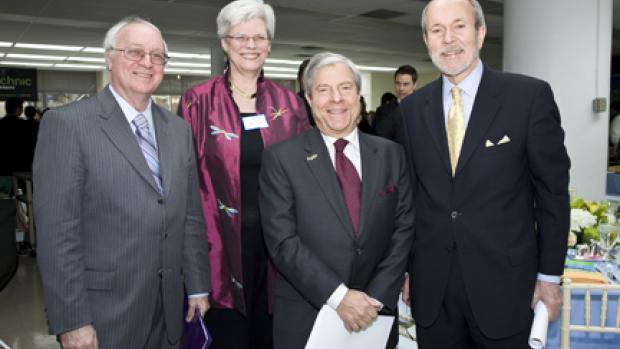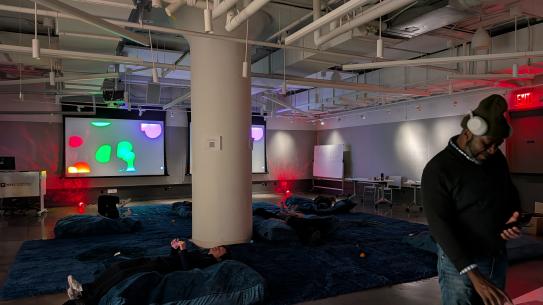Power Players and Educators Set the Course for NYC: Poly's 2nd Annual Leadership Breakfast and Innovation Think Tank

A who’s who of New York business and government leaders gathered on Friday, April 18 to share ideas about the power of Polytechnic University to enliven New York City’s creativity, inventiveness and economy and prepare students for the challenges of the 21st century.
The Silicon Valley of the East
Brooklyn Borough President Marty Markowitz kicked off the Second Annual Leadership Breakfast and Innovation Think Tank by describing the proposed partnership between Poly and New York University as a way to create a “mega-engineering school” that will “give birth to economic success.”
President Jerry M. Hultin demonstrated the critical need for such an engineering school by highlighting the stark differences in tech- and science-related economic development in New York City compared to Silicon Valley and Massachusetts, homes to world-renowned engineering and science schools, Stanford and MIT respectively.
The NY metro area, for example, receives one fifth of the venture capital investment that Silicon Valley does and one third of the research and development funding that Massachusetts does.
“This has got to change,” said President Hultin. “The city needs to diversify.”
Poly is laying the groundwork to take itself and NYC to a new level of innovation, invention and entrepreneurship, to, in a sense, create a Silicon Valley of the East.
As examples, President Hultin cited Poly’s BEST Center, an incubator for start-up tech companies, a high-performance computing system in development for the Army, advances in bioengineering, particularly in sustainable energy, and partnerships with local schools to foster a love for math and science at an early age in underserved communities. He also described efforts to bring together NYC’s massive media and entertainment industry with Poly’s technology know-how.
Poly and NYU: a perfect fit
Poly’s merger with NYU, which is expected to be approved by the state this summer, is essential to Poly realizing the dreams it has for itself and NYC.
“We’re doing all this great stuff, and now we have the right partner to take it further,” said President Hultin. “For it to work though, Poly has to be even more Poly.”
NYU Provost David McLaughlin echoed that sentiment by saying that “the faculty who are so engaged and behind the merger feel in their daily work an absence of the innovation and invention that Poly is all about.”
The “natural areas of collaboration” between the two schools according to Provost McLaughlin are biomedical engineering, urban science, and information technology as it relates to media, art, and society.
In fact, a biomedical engineering collaboration between a Poly faculty member and two NYU faculty has already resulted in a provisional patent and steps are being made to attract a company to commercialize the invention.
“Without a doubt,” said Provost McLaughlin, “our partnership will make significant contributions to the economic development of New York City.”
Diversity and partnerships
Both President Hultin and Provost McLaughlin stressed that with all of the strides Poly has and will continue to make, that it will maintain its heritage of serving immigrant and first-generation students.
“Diversity is the core of our partnership,” said Provost McLaughlin.
Chairman of Poly’s Board of Trustees Craig Mathews closed the morning’s discussions by saying: “Poly has planted many seeds of ideas. Our partnerships with business and government will help them grow.”



